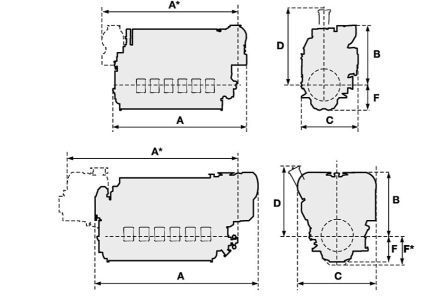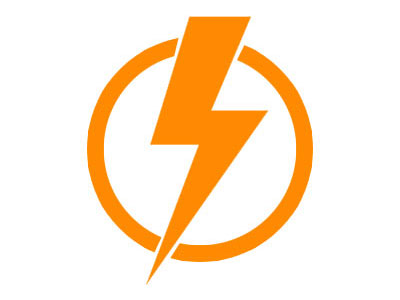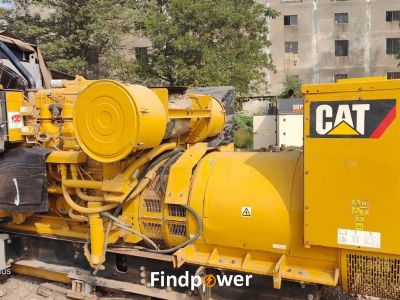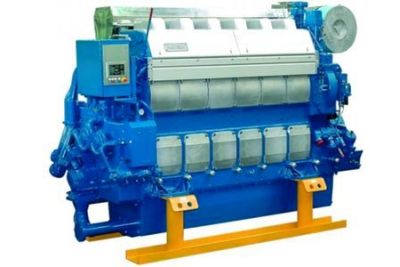
Wärtsilä 26 Engines and Details
Compact & light unit with low operating costs, also used for generating set applications
The Wärtsilä 26 was developed in response to a need in the market for a new engine in the 260 mm cylinder bore class. The shortest and lowest engine in its class, the Wärtsilä 26 requires minimal space in the engine room.
Wärtsilä works in close co-operation with its customers when conducting field tests and monitoring selected test components. The Wärtsilä 26 has fewer parts, less maintenance requirements, low fuel consumption, reduced emission levels, and has the ability to run reliably on a variety of fuels.
The Wärtsilä 26 engine is fully compliant with the IMO Tier II exhaust emissions regulations set out in Annex VI of the MARPOL 73/78 convention.
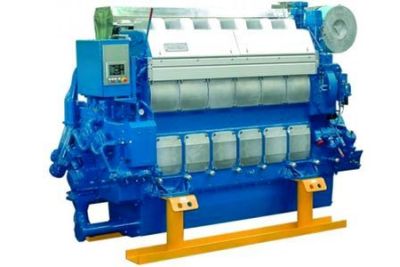
| Wärtsilä 26 | IMO Tier II | ||
|---|---|---|---|
| Cylinder bore | 260 mm | Fuel specification: | |
| Piston stroke | 320 mm | Fuel oil | 700 cSt/50oC |
| Cylinder output | 340 kW/cyl | 7200 sR1/100oC | |
| Speed | 1000 rpm | ISO 8217, category ISO-F-RMK 700 | |
| Mean effective pressure | 25.5 bar | SFOC 184 g/kWh at ISO condition | |
| Piston speed | 10.7 m/s | ||
| Rated power | |
|---|---|
| Engine type | kW |
| 6L26 | 2 040 |
| 8L26 | 2 720 |
| 9L26 | 3 060 |
| 12V26 | 4 080 |
| 16V26 | 5 440 |
| Dimensions (mm) and weights (tonnes) | |||||||
|---|---|---|---|---|---|---|---|
| Engine type | A | A | B | B | C | C | D |
| 6L26 | 4 401 | 4 175 | 1 882 | 1 882 | 1 951 | 2 021 | 2 420 |
| 8L26 | 5 304 | 4 999 | 2 019 | 1 882 | 2 011 | 2 102 | 2 240 |
| 9L26 | 5 703 | 4 389 | 2 019 | 1 882 | 2 011 | 2 102 | 2 240 |
| 12V26 | 5 218 | 4 968 | 2 074 | 2 074 | 2 453 | 2 453 | 2 060 |
| 16V26 | 6 223 | 5 973 | 2 151 | 2 151 | 2 489 | 2 489 | 2 060 |
| Dimensions (mm) and weights (tonnes) | |||||||
| Engine type | F dry sump |
F wet sump |
Weight dry sump |
Weight wet sump |
|||
| 6L26 | 818 | 950 | 18.1 | 18.4 | |||
| 8L26 | 818 | 950 | 22.0 | 22.5 | |||
| 9L26 | 818 | 950 | 23.9 | 24.8 | |||
| 12V26 | 800 | 1 110 | 29.2 | 31.9 | |||
| 16V26 | 800 | 1 110 | 33.0 | 36.5 | |||
|
|
|||||||
Engine dimensions
A - Total length of the engine when the turbocharger is located at the flywheel end.
A - Total length of the engine when the turbocharger is located at the free end.
B - Height from the crankshaft centreline to the highest point.
B - Height from the crankshaft centreline to the highest point when the turbocharger is located at the flywheel end.
C - Total width of the engine.
C - Total width of the engine when the turbocharger is located at the flywheel end.
D - Minimum height from the crankshaft centreline when removing a piston.
F - Distance from the crankshaft centreline to the bottom of the oil sump.
Dimensions and weights
- Dimensions are in millimetres and weights are in metric tonnes. Indicated values are for guidance only and are not binding.
- Cylinder configurations: L = in-line and V = v-form.
Specific fuel oil consumption
At ISO standard reference conditions
Lower calorific value of fuel 42 700 kJ/kg
Tolerance 5%
Without engine driven pumps
At 85% load
ISO standard reference conditions
Total barometric pressure: 1.0 bar
Suction air temperature: 25 °C
Charge air, or scavenge air, cooling water temperature: 25 °C
Relative humidity: 30%
